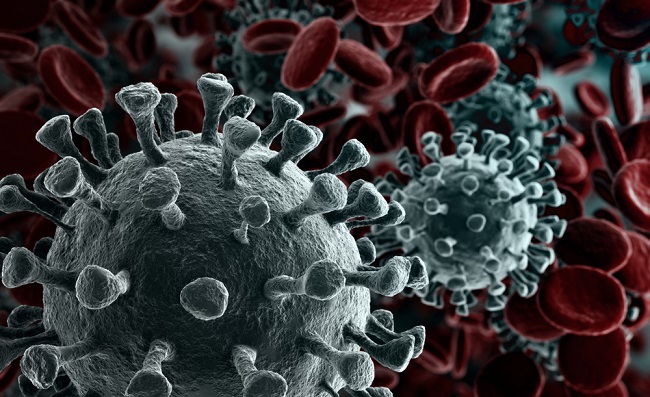The evolution of SARS-CoV-2, from bats to humans, shows a slow rate of change
Published: 15 March 2021
Scientists looking at the evolution of SARS-CoV-2, the virus that causes COVID-19, have found that since December 2019 – and for the first 11 months of the SARS-CoV-2 pandemic – there has been very little ‘important’ genetic change observed in the hundreds of thousands of sequenced virus genomes.
Scientists looking at the evolution of SARS-CoV-2, the virus that causes COVID-19, have found that since December 2019 – and for the first 11 months of the SARS-CoV-2 pandemic – there has been very little ‘important’ genetic change observed in the hundreds of thousands of sequenced virus genomes.

The study – published in PLOS Biology and led by the University of Glasgow and Temple University, Philadelphia – suggests that while there have been some changes (such as the D614G mutation which was found to moderately enhance transmissibility), most changes have been ‘neutral’ evolutionary processes.
The research—a collaboration between researchers in the UK, US and Belgium – involved scientists at the MRC-University of Glasgow Centre for Virus Research (CVR), Institute for Genomics and Evolutionary Medicine, Temple University, Rega Institute, KU Leuven and Pennsylvania State University, who were able to turn their experience of analysing data from HIV and other viruses to SARS-CoV-2, to look at the genetic signatures of evolution embedded in the virus genomes. The scientists wanted to determine the viral ‘signatures’ and changes in genome composition across the evolutionary history of SARS-CoV-2.
By studying the mutational processes of SARS-CoV-2 and related sarbecoviruses (the group of viruses SARS-CoV-2 belongs to from bats and pangolins), the study found evidence of fairly significant change – but before the emergence of SARS-CoV-2 in humans. This means that the ‘generalist’ nature of the animal ancestor of SARS-CoV-2, imbued SARS-CoV-2 with a ready-made ability to infect humans and other mammals, but those properties most probably evolved in bats prior to spilling over into humans.
Dr Oscar MacLean at the CVR said, “Our study results show changes have occurred with SARS-CoV-2, but that most of these mutations are of of no evolutionary significance and accumulate by ‘surfing’ along the millions of transmission events, like they do in all viruses. The slow rate of evolution can be attributed to the highly susceptible nature of the human population to this new pathogen, with limited pressure from population immunity, and lack of containment, leading to exponential growth making almost every virus successful.”
By the end of 2020, however, the virus was increasingly coming into contact with existing host immunity, as numbers of previously infected people are now higher. Coupled with the evasion of immunity in longer-term infections in chronic cases (e.g., in immunocompromised patients), these new selective pressures are increasing the number of important virus mutants contributing to the variants of concern now being seen in the pandemic.
Prof David Robertson, Head of CVR Bioinformatics, said: “It’s important to appreciate SARS-CoV-2 still remains an acute virus, cleared by the immune response in the vast majority of infections. However, it’s moving away from the January 2020 variant used in all of the current vaccines to raise protective immunity. The current vaccines will continue to work against the circulating variants but the more time that passes, and the bigger the differential between vaccinated and not-vaccinated numbers of people, the more opportunity there will be for vaccine escape.”
Prof Sergei Pond, from Temple University, said: “What’s been so surprising is just how transmissible SARS-CoV-2 has been from the outset. Usually viruses that jump to a new host species take some time to acquire adaptations to be as capable as SARS-CoV-2 at spreading, and most never make it past that stage, resulting in dead-end spillovers or localised outbreaks.”
Prof David Robertson added: “The reason for the ‘shifting of gears’ of SARS-CoV-2 in terms of its increased rate of evolution at the end of 2020, associated with more heavily mutated lineages, is because the immunological profile of the human population has changed.
“The first race was to develop a vaccine. The race now is to get the global population vaccinated as quickly as possible.”
The paper, ‘Natural selection in the evolution of SARS-CoV-2 in bats created a generalist virus and highly capable human pathogen’ is published in PLOS Biology. The study was funded by The MRC, the European Research Council, Wellcome and the Research Foundation – Flanders.
Enquiries: ali.howard@glasgow.ac.uk or elizabeth.mcmeekin@glasgow.ac.uk / 0141 330 6557 or 0141 330 4831
First published: 15 March 2021
Related Links
- Prof David Robertson - research profile
- Published paper in PLOS Biology
- MRC-UofG CVR
- Institute of Infection, Immunity and Inflammation
- College of MVLS
- Temple University
- MRC
- Wellcome

